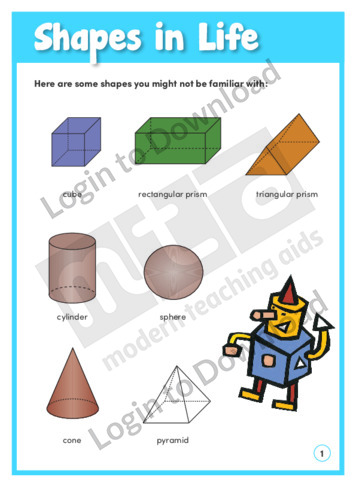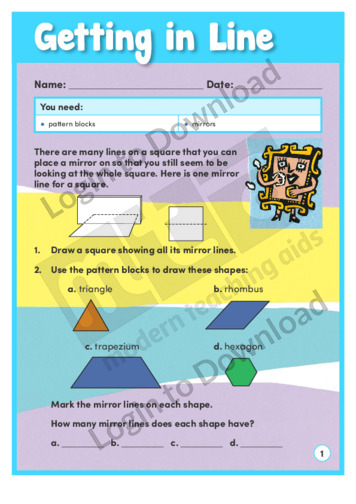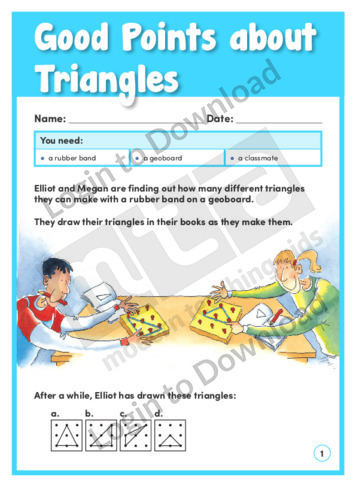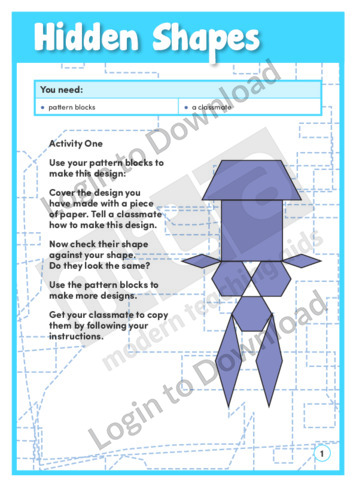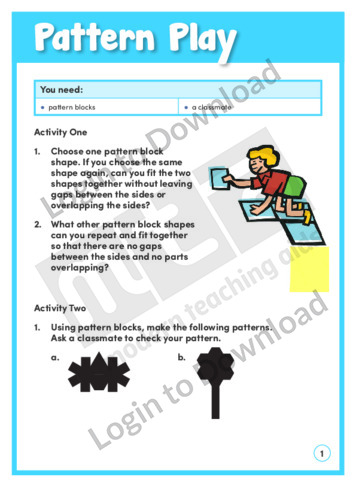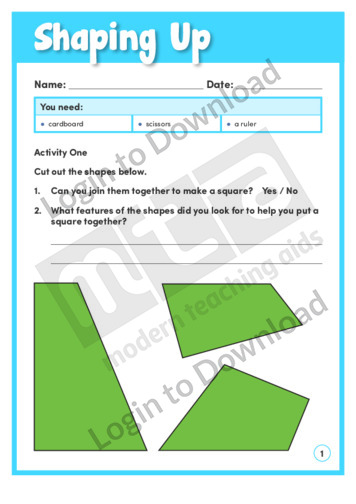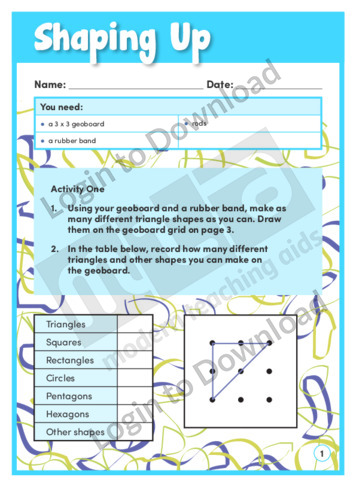This learning activity, ‘Shapes in Life’, introduces a variety of solids, including both polyhedra such as cubes and closed surfaces such as spheres. Students are asked to identify both two-dimensional and three-dimensional shapes in photographs of everyday objects. The accompanying teaching notes provide suggestions for supporting learning and further exploration.
In this learning activity, ‘Getting in Line’, students use pattern blocks and mirrors to find the lines of symmetry in various shapes and patterns. An answer sheet is provided and includes teaching notes with suggestions for supporting learning and further exploration.
This learning activity, ‘Good Points about Triangles’, prompts students to use a nine-pin geoboard to investigate triangles. It asks students to make similar and congruent triangles and to discuss why they can’t make an equilateral triangle on their geoboard. Students can record their triangles on the geoboard grid page. An answer sheet is provided and …More
This learning activity, ‘Hidden Shapes’, develops visual memory and the use of geometric language. Students provide each other with instructions for making a shape with pattern blocks and for finding a hidden pattern block in the classroom. The accompanying teaching notes offer suggestions for supporting learning and further exploration.
In this hands-on activity, ‘Pattern Play’, students use pattern blocks to create various two-dimensional shapes, including arrows, pentagons, and octagons. Students then create their own shape and ask a classmate to copy it. An answer sheet is provided and includes teaching notes with suggestions for supporting learning and further exploration.
In this learning activity, ‘Post It!’, students are asked to predict which solids will fit through various holes in a child’s posting set. In the hands-on activity, students make solids out of play dough or clay. An answer sheet is provided and includes teaching notes with suggestions for supporting learning and further exploration.
This learning activity, ‘Shaping Up’, provides students with three shapes to cut out and rearrange to form a square. It also asks students to create their own shape puzzle for a classmate. An answer sheet is provided and includes accompanying teaching notes with suggestions for supporting learning and further exploration.
This learning activity, ‘Shaping Up’, prompts students to use a geoboard to classify triangles, and rods to analyse squares. Students record their investigations on the supplied geoboard grid sheet and square dot paper. An answer sheet is provided and includes teaching notes with suggestions for supporting learning and further exploration.
It�s that easy!

